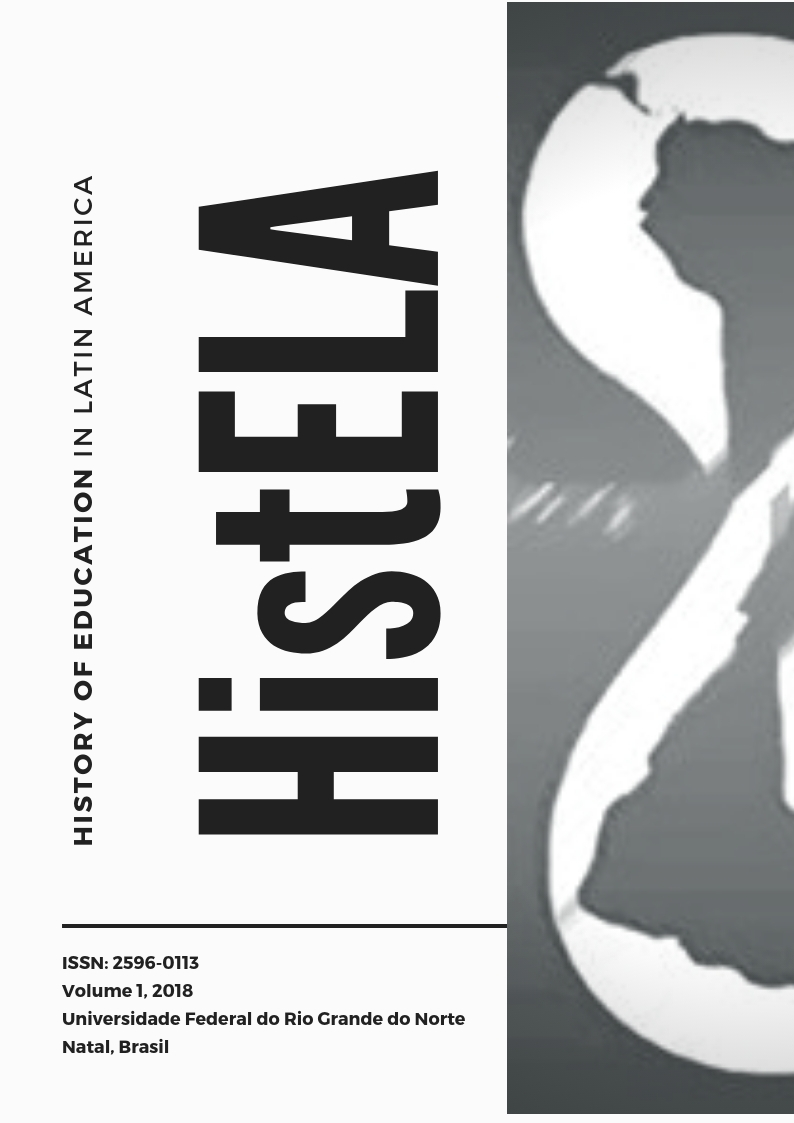The school patron and national identity
quarrels in the act of nominating the place/public school (Buenos Aires, Argentina, the mid-nineteenth and twentieth century)
DOI:
https://doi.org/10.21680/2596-0113.2018v1n0ID16365Keywords:
Place/Public school, Representation, School patron, National identityAbstract
This presentation reflects the progress of an investigation project that aims to discern the relevance that for the representation supposed and still makes the nomination of the public school with a school patron. Although it was already usual in the eighteenth century that the schools of Buenos Aires were under the protection of a "patronus/supporter" after Independence, this trend mutates, but it is between the mid-nineteenth and twentieth century, when under various state paradigms the act of nominating it is stressed. Although the national flag and coat of arms had consensus to represent the state, nominating with a patron goes to the heart of national identity and is intersected by governmental, historiographic and party doctrine tensions, which are visible from coexistence, forgetting, quarrels and silences.
Downloads
References
BUCHRUCKER, C. (1987). Nacionalismo y peronismo: La Argentina en la crisis ideológica mundial (1927-1955). Buenos Aires, Argentina: Sudamericana.
CHARTIER, M. (1992). El Mundo como Representación. Historia Cultural: entre practica y representación. Barcelona, España: Gedisa.
FERNÁNDEZ BRAVO, A. (2000). La invención de la Nación. Buenos Aires, Argentina: Manantial.
HOBSBAWM, E. y RANGER, T. (2002). La invención de la tradición. Barcelona, España: Critica.
HALPERIN DONGUI, T. (1996). Ensayos de historiografía. Buenos Aires, Argentina: El Cielo por Asalto-Imago Mundi.
MONTENEGRO, A. M. (2012) Un lugar llamado escuela pública. Origen y paradoja (Buenos Aires 1580.1911). Buenos Aires, Argentina: Ediciones Miño y Dávila.
MONTENEGRO, A. M. (2012a). “Tensiones en la escuela pública capitalina durante el justicialismo”. Anales de las XVII Jornadas Argentinas de Historia de la educación. Facultad de Filosofía y Letras, Universidad Nacional de Tucumán.
MONTENEGRO, A. M. y MÉNDEZ, J. (2017). “Estado, política migratoria y escuela pública: mediaciones desde los libros de lectura (Argentina, Buenos Aires, 1853-1955)”. Rev. Dialogo Educ, 17 (51), 17-39, jan/mar. Curitiba.
MUNTAÑOLA, J. (1982). “Modernidad y tradición: aproximaciones a la categoría de espacio”. Papers N° 17, Revista de Sociología. Barcelona.
NAVARRO, G. (1909) Reseña Histórica de la Escuela de la Catedral al Norte. Buenos Aires, Argentina: Establecimientos tipográficos El Comercio.
OSLAK, O. (1985). La formación del Estado argentino. Buenos Aires, Argentina: Ediciones Belgrano.
OSSENBACH, G. (1999). “Introducción” en Génesis de los sistemas educativos nacionales. Madrid, España: UNED.
PAREKH, B. (1994). “Discourses on National Identity”. Political Studies XLII, 492–504.
ROMERO, J. L. (1999). Las ideas en la Argentina del Siglo XX. Buenos Aires, Argentina: Biblioteca Actual.
TERAN, O. (2000). “El pensamiento finisecular” en LOBATO, M. (2000) Nueva Historia Argentina. El progreso, la modernización y sus límites (1880-1916). Buenos Aires, Argentina: Sudamericana.
ZANATTA, L. (2005). Del Estado liberal a la Nación católica. Iglesia y ejército en los orígenes del peronismo 1930-1943. Buenos Aires, Argentina: UNQ.
ZANATTA, L. (2014). El Populismo. Buenos Aires, Argentina: Ediciones Katz.
ZORRILLA, B. (1978). Historia de la Escuela N° 2, Distrito Escolar 1, Folio 1, Secretaría de Educación, Ciudad de Buenos Aires.
Downloads
Published
How to Cite
Issue
Section
License
Autores que publicam nesta revista concordam com os seguintes termos:
Autores mantém os direitos autorais e concedem à revista o direito de primeira publicação, com o trabalho simultaneamente licenciado sob a Licença Creative Commons — Attribution 4.0 International — CC BY 4.0 que permite o compartilhamento do trabalho com reconhecimento da autoria e publicação inicial nesta revista.
Autores têm autorização para assumir contratos adicionais separadamente, para distribuição não-exclusiva da versão do trabalho publicada nesta revista (ex.: publicar em repositório institucional ou como capítulo de livro), com reconhecimento de autoria e publicação inicial nesta revista.
Autores têm permissão e são estimulados a publicar e distribuir seu trabalho online (ex.: em repositórios institucionais ou na sua página pessoal) a qualquer ponto antes ou durante o processo editorial, já que isso pode gerar alterações produtivas, bem como aumentar o impacto e a citação do trabalho publicado.


 Português (Brasil)
Português (Brasil) English
English Español (España)
Español (España) Français (Canada)
Français (Canada)



